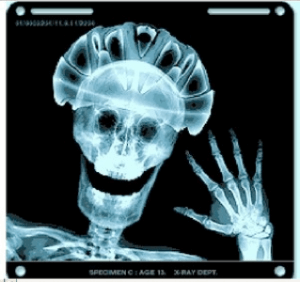 Helmets are no joke. In a crash – they cushion impact, preventing a great deal of personal injury when worn properly. They help reduce the risk inherent in riding a bicycle in an unpredictable environment. But really how do helmets get safety certified? I was forwarded this great article that covers a lot of ground in addressing the current state of …. the Bicycle Helmet.
Helmets are no joke. In a crash – they cushion impact, preventing a great deal of personal injury when worn properly. They help reduce the risk inherent in riding a bicycle in an unpredictable environment. But really how do helmets get safety certified? I was forwarded this great article that covers a lot of ground in addressing the current state of …. the Bicycle Helmet.
“Senseless” by Bruce Barcott from Bicycling.com
In Senseless, a lot of questions are brought up regarding the myriad options available to the consumer seeking to purchase a new helmet and what we are really getting with that price tag.
It’s so true. Someone comes into our shop looking to get a helmet. First thing I usually say is ” They all pass the same safety rating”. So what guides the consumer in their decision process and Really — Why aren’t there helmets that are designed above and beyond that baseline established by the government! Helmets are all different colors, styles, shapes and have variations in fit – but really they all do the same thing.
Here’s an interesting video explaining the basics of how helmets are constructed.
Helmet design and innovation focuses on performance during use – not safety. By being lighter weight, having increased ventilation and comfort in fit – helmets provide small advantages to the performance oriented cyclist while still passing the minimum safety ratings. The Consumer Product Safety Commission (CPSC) was tasked by Congress with the development of a U.S. Government standard for bicycle helmets, and began to do so in 1994 with final draft approval in 1998. So all helmets sold in the United States after 1999 must meet this standard. The CPSC is not the only mandate in town. The ASTM standard is still in active development. It is a voluntary standard and was never the law of the land in the US. It is self-certifying, so a manufacturer can put a sticker in their helmets stating that they meet the ASTM standard without independent certification. Otherwise the lab tests required are very similar. They primarily test for a catastrophic impact due to linear acceleration – which at the time meant a skull fracture or brain trauma resulting in serious disability if not death.
As the understanding of brain injury has developed over the past few decades – the damages from less severe impacts have been understood to have long and short term effects. Concussions are a result of rotational acceleration in the braincase with serious implications. Modern helmets are not designed to handle concussions – and it is debatable whether helmets are capable of mitigating rotational acceleration.
However there are engineers coming up with possible solutions. By 2008 one design, the MIPS (Multi-directional Impact Protection System) system was conceived. It contained a low-friction slip plate between the head and EPS (Expanded PolyStyrene) liner. On impact, the helmet rotates independent of the MIPS liner, absorbing some rotational acceleration. This is not the only design innovation addressing rotational acceleration in helmets. However the difficulty in implementing it in current helmet design is at an impasse because of the unchanging 1999 Safety Standards and a lack of consumer education and demand.
Change is slow – so far concussion-resistent designs are popping up in equestrian and snowboarding helmets with a few bike helmets on the market…
POC Trabec Race Helmet for $220
We need to do so much better.